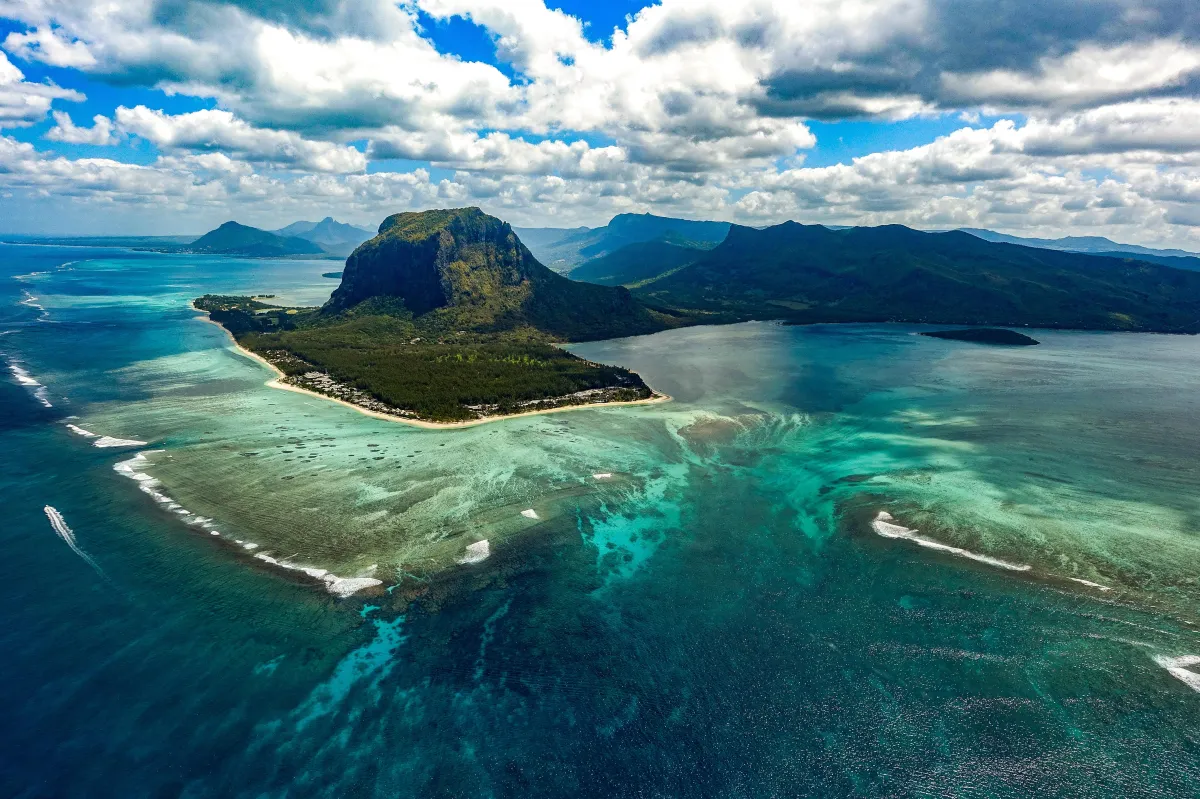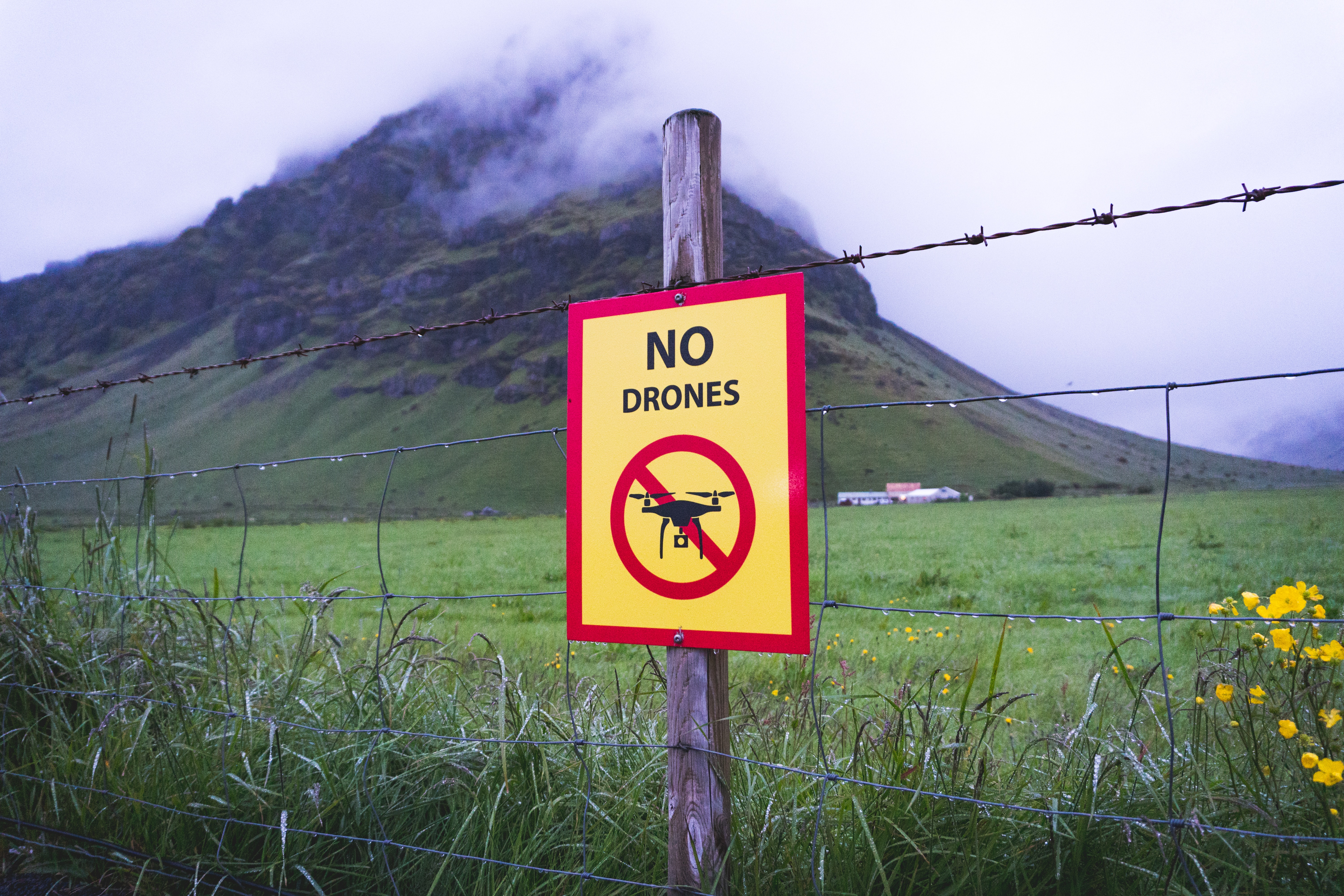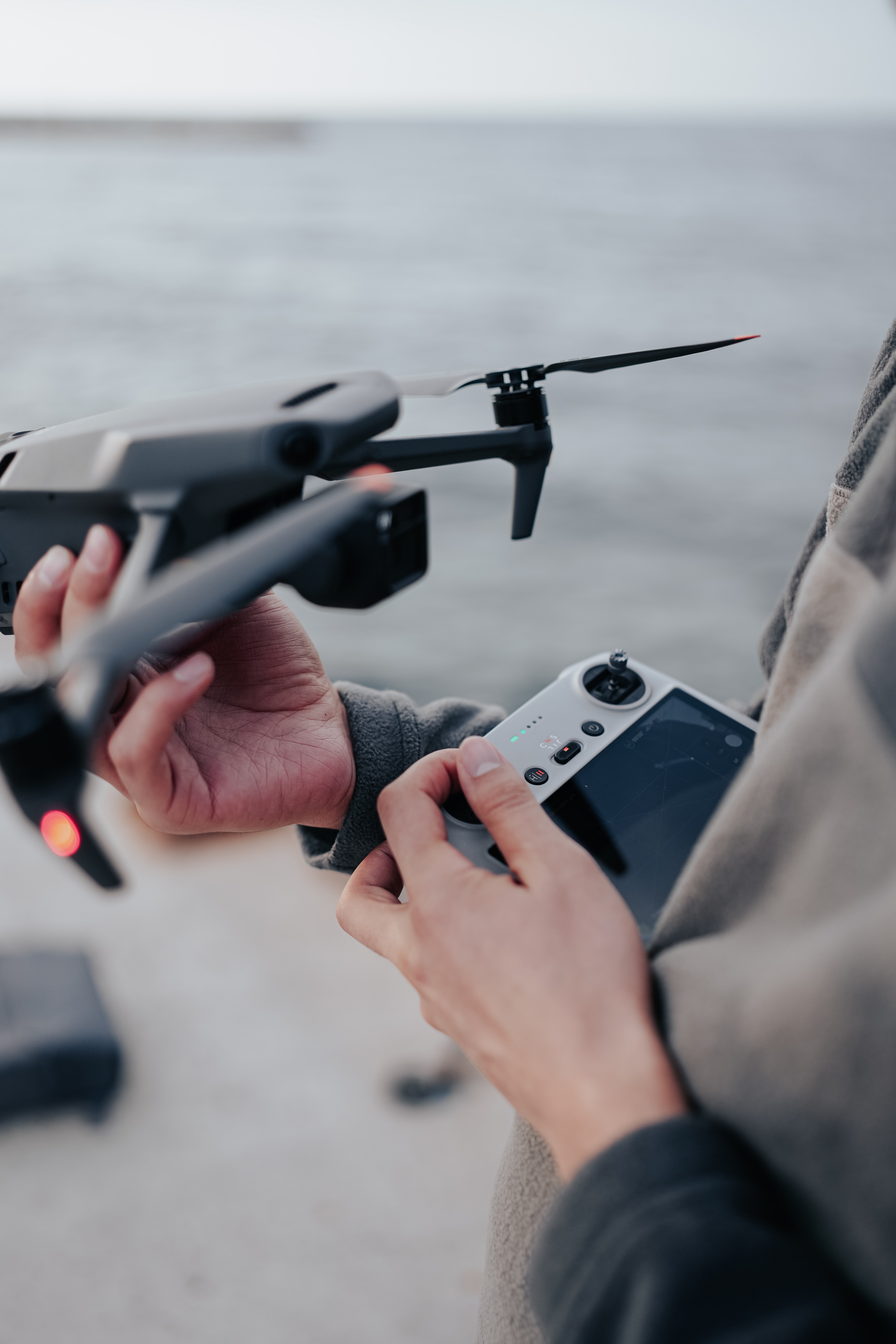
Drone Safety: Ensuring Safe Skies for All Drone Enthusiasts
In the world of drones, safety should always be a top priority. As a drone enthusiast, I understand the excitement that comes with flying these amazing machines, but it's crucial to ensure that we do so responsibly and safely. In this article, I'll provide you with helpful suggestions and the reasons behind them to ensure drone safety for yourself and others.
Introduction to Drone Safety
Drones have become increasingly popular, and their applications are diverse. However, safety should be a primary concern for all drone enthusiasts. Here, we'll delve deeper into the importance of safety and why it should be the foundation of your drone journey.
Safety not only safeguards people and property but also helps maintain the reputation of the drone community. Accidents or careless flying can lead to negative public perception and stricter regulations. By adhering to safety guidelines, you become an ambassador for responsible drone use.
Understanding the Importance of Safety
Safety should be the cornerstone of every drone enthusiast's journey. It goes beyond mere compliance with regulations; it's a moral obligation to protect people, property, and the environment. Moreover, responsible drone operation helps maintain the reputation of the entire drone community.
By adhering to safety guidelines, you not only minimize the risk of accidents but also foster positive perceptions of drones. This encourages more inclusive and flexible regulations in the future, allowing us to continue enjoying this incredible technology.
Know the Laws and Regulations
Navigating the legal landscape is essential to ensure safe drone operation. Laws and regulations governing drones can vary significantly from one country or region to another. Here's a more in-depth look at understanding and complying with these rules:
Federal and Local Drone Regulations:
Research: Thoroughly research the regulations imposed by your country's aviation authority. In the United States, for instance, the Federal Aviation Administration (FAA) is the governing body for drone operations. Stay informed about changes or updates to drone laws, as they may evolve over time.
No-fly Zones: Be aware of no-fly zones, which may include areas around airports, military bases, and government buildings. Failure to adhere to these restrictions may lead to significant penalties.
Altitude Restrictions: Many regions have altitude restrictions, limiting how high you can fly your drone. In the United States, consumer drones are subject to a 400-foot altitude restriction. Understanding these limits is crucial to safe operation.
Licensing and Registration: Depending on your location and the purpose of your drone use, you may need to obtain a pilot's license or register your drone. Adhering to regulations is crucial to prevent legal repercussions.

Source: b4ufly
Licensing and Registration:
Pilot's License: If your drone usage extends beyond recreational purposes, you may need a pilot's license. This typically involves passing an examination and fulfilling training requirements.
Drone Registration: Registering your drone is often a legal requirement. This process involves providing information about your drone's make, model, and ownership details. Registration helps authorities trace your drone in case of loss or accidents.
Pre-flight Checklist
A pre-flight checklist is an invaluable tool to ensure the safety and functionality of your drone before every flight. Let's break down what this checklist should include:
Inspection of Your Drone
Visual Inspection: Examine your drone's physical condition. Check for any visible damage, including cracks, bent propellers, or loose components.
Battery Condition: Inspect the battery for any signs of damage, such as swelling or punctures. Make sure the battery is securely placed within its designated compartment.
Propeller Check: Verify that all propellers are securely attached and free from dirt or debris.
Electrical Connections: Examine all electrical connections, including wires and cables, to ensure they are firmly connected.
Weather Conditions Assessment
Assessing weather conditions is a critical aspect of pre-flight safety:
Wind Speed and Direction: Check the current wind speed and direction using a reliable weather app or device. Ensure that your drone can handle the prevailing wind conditions.
Precipitation: Avoid flying in rainy or snowy conditions, as moisture can damage sensitive electronic components.
Visibility: Good visibility is essential for safe drone operation. Steer clear of flying in situations with reduced visibility, like fog or heavy rain.
Choosing the Right Location
Selecting an appropriate flying location contributes significantly to safety:
Avoiding Restricted Areas
No-fly Zones: Never fly your drone near airports, helipads, military bases, or other restricted airspace. Always consult airspace maps and apps to identify these zones before flight.
Privacy Concerns: Respect privacy laws and guidelines. Avoid flying over private property without the owner's permission, and be cautious when capturing images or videos of individuals.

Safe Takeoff and Landing
Taking off and landing safely is fundamental:
Proper Takeoff Procedures
Open Area: Find a level, open area free from obstructions, people, and animals. Ensure there is ample space for your drone to take off without obstacles.
Calibration: Calibrate your drone's compass and GPS if necessary. Accurate calibration is crucial for stable flight.
Throttle Control: Gradually increase the throttle to lift off smoothly. Sudden and aggressive throttle movements can destabilize your drone.
Landing Safely
Clear Landing Area: Before initiating the landing process, ensure the landing area is free from people, animals, and obstacles. A clear space minimizes the risk of accidents during landing.
Gentle Descent: Descend slowly and steadily. Avoid abrupt descents, as they can lead to crashes or damage to your drone.
Drone Safety Flight Etiquette
Maintaining a positive image for the drone community requires practicing good flight etiquette:
Respecting Others' Privacy
Distance: When flying near people, maintain a respectful distance to avoid causing discomfort or intruding on their personal space.
Privacy-sensitive Areas: Be particularly cautious when flying near homes, public gatherings, or events. Avoid capturing images or videos that infringe on individuals' privacy.
Interactions with Other Flyers
Communication: When flying in groups or near other drone operators, establish clear lines of communication. Use hand signals or radios to coordinate movements and avoid collisions.
Sharing the Sky: Be courteous and considerate when sharing the airspace with other drones or aircraft. Yield the right of way when necessary to prevent accidents.
Emergency Procedures
Even with meticulous planning, emergencies can arise during a flight. It's essential to grasp the importance of knowing how to react in these circumstances.
Handling Malfunctions
Recognizing Malfunctions: Familiarize yourself with common drone malfunctions, such as motor failures, GPS glitches, or loss of signal. Knowing how to identify these issues is the first step to addressing them.
Emergency Landing: Practice emergency landing procedures in a safe environment. Learn how to bring your drone back to the ground safely in case of critical failures.
Drone Retrieval Techniques
Stuck in Trees: If your drone becomes stuck in a tree or another challenging location, avoid risky maneuvers that could damage the drone or cause injury. Consider using specialized retrieval tools or seek professional assistance.
Related read: Can drone propellers hurt you?
Battery Management
Maintaining proper battery management is essential for safe and efficient drone operation:
Monitoring Battery Life
Battery Voltage: Keep a close eye on your drone's battery voltage during flight. Most drones provide real-time voltage information on your remote controller's screen.
Return-to-Home (RTH) Setting: Set up the RTH feature to initiate a safe return to your location when the battery reaches a predetermined level. This prevents your drone from running out of power mid-flight.

Battery Safety Tips
Storage: Store lithium-polymer (LiPo) batteries in a cool, dry place away from direct sunlight. Consider using fireproof bags designed for battery storage.
Charging: Avoid overcharging or discharging LiPo batteries beyond their recommended voltage range, as this can damage the cells and pose a fire hazard.
Avoiding Wildlife and Natural Hazards
Responsible drone operation extends to protecting wildlife and navigating natural challenges:
Protecting Wildlife
Respect Wildlife: Maintain a respectful distance from wildlife to prevent stress or harm to animals. Flying too close to birds or nests can disrupt their natural behavior.
Wildlife Habitats: Research and identify wildlife habitats in your flying area. Avoid these areas or maintain a safe distance to minimize disturbances.
Dealing with Weather Challenges
Weather Forecast: Check weather forecasts before each flight to assess conditions such as wind speed, precipitation, and temperature. High winds can affect your drone's stability and control.
Weather Limitations: Avoid flying in extreme weather conditions, including heavy rain, snow, or strong gusts of wind. Inclement weather can impair your drone's performance and safety.
Responsible Photography and Videography
When using your drone for aerial photography and videography, consider the following:
Privacy and Legal Considerations
Privacy Laws: Familiarize yourself with privacy laws and regulations that pertain to aerial photography and videography in your jurisdiction. Different regions may have varying rules.
Permission: Obtain the necessary permissions or permits when capturing images or videos in public or private spaces. Respect no-fly zones around sensitive areas, such as government buildings or military installations.
Aerial Photography Tips
Camera Settings: Experiment with camera settings to achieve the desired exposure and composition. Optimize image quality by fine-tuning parameters like ISO, shutter speed, and aperture.
ND Filters: Consider using neutral density (ND) filters to control exposure, reduce glare, and capture smoother footage. In sunny conditions, ND filters prove exceptionally valuable.

Maintenance and Upkeep
Regular maintenance ensures your drone remains in optimal condition:
Cleaning and Maintenance
Regular Cleaning: Clean your drone regularly to remove dirt, dust, and debris that can accumulate on the body and sensors. Utilize a gentle brush and compressed air for those challenging-to-access spots during cleaning.
Screw and Bolt Check: Periodically inspect all screws and bolts to ensure they are tight. Loose fasteners can lead to structural instability.
Sensor Calibration: Calibrate sensors such as the gyroscope and accelerometer as recommended by the manufacturer. Accurate flight relies on the crucial aspect of precise calibration.
Software Updates
Stay Informed: Keep abreast of firmware and software updates provided by the drone manufacturer. Manufacturers release updates to improve performance, enhance safety features, and fix bugs.
Update Process: Follow the manufacturer's instructions for updating your drone's software. Typically, this involves connecting your drone to a computer or smartphone and downloading the latest firmware.
Insurance Considerations
Considering insurance options is a smart move for drone enthusiasts:
Drone Insurance Benefits
Damage Coverage: Drone insurance can cover damage to your drone in case of accidents, collisions, or crashes. This coverage is invaluable for protecting your investment.
Liability Protection: Drone insurance may also provide liability coverage, protecting you from financial responsibility in case your drone causes damage to property or injures someone.
Theft Coverage: Some insurance policies include theft coverage, which can be crucial if your drone is stolen.
How to Get Drone Insurance
Research Providers: Research insurance providers that offer drone coverage. Look for established providers with a reputation for prompt claims processing.
Policy Comparison: Compare policies to find one that suits your needs and budget. Take into account elements like coverage limits, deductibles, and premium expenses.
Community Engagement
Active involvement in the drone community contributes to a culture of safety:
Joining Local Drone Groups
Local Clubs: Consider joining local drone clubs or online communities. These groups offer opportunities to connect with other enthusiasts, share knowledge, and engage in group activities.
Learning Opportunities: Drone clubs often organize workshops, training sessions, and group flights. Participating in these events can enhance your skills and understanding of drone safety.
Sharing Knowledge and Experience
Educational Role: As an experienced drone enthusiast, share your knowledge and experiences with newcomers. Offer guidance on safety practices, equipment choices, and flight techniques.
Online Forums and Social Media: Engage in online forums and social media groups dedicated to drones. Answer questions, provide advice, and contribute to discussions on safe drone operation.
Educating Others about Drone Safety
Promoting responsible drone flying is a shared responsibility:
Spreading Awareness
Educate Your Circle: Take the initiative to educate your friends and family about the importance of drone safety and regulations. Promote awareness of the potential hazards linked to drones.
Social Media Advocacy: Use your social media presence to share safety tips, news, and updates related to drone safety. Encourage responsible drone use within your online networks.
Encouraging Responsible Flying
Lead by Example: Set an example by always flying responsibly and following safety guidelines. Emphasize the importance of safety in every flight you undertake.
Mentorship: Mentor novice drone enthusiasts and guide them in adopting safe flying practices. Motivate them to pursue education and training opportunities.
Conclusion
In conclusion, drone safety is a collective responsibility that every enthusiast should embrace. By adhering to laws and regulations, maintaining your equipment, and practicing responsible flying, you contribute to the positive image of the drone community. Enjoy the thrill of drone flying while ensuring the skies remain safe for all.
Frequently Asked Questions (FAQs)
1. Is it necessary to register my drone with the FAA?
Yes, in most cases, you need to register your drone with the Federal Aviation Administration (FAA) if it weighs over 0.55 pounds (250 grams). Registration is a legal requirement.
2. What should I do if my drone loses connection during flight?
If your drone loses connection with the controller, remain calm. Activate the "Return to Home" (RTH) function if available, and monitor its return. If RTH fails, follow emergency retrieval procedures.
3. How can I find out about local drone regulations in my area?
Check with your local aviation authority or visit the FAA's website (if you're in the United States) to find information about drone regulations specific to your location.
4. What are the privacy considerations when flying a drone?
When flying near people or private property, always respect their privacy. Avoid capturing images or videos that intrude on personal space without proper consent.
5. Is drone insurance necessary for recreational drone users?
While not legally required for recreational users in many places, drone insurance is highly recommended. It provides financial protection in case of accidents, damage, or liability issues.
By following these guidelines and continuously educating yourself about drone safety, you can enjoy the world of drones while keeping yourself and others safe.

Copyright © Drone Guide Central - All Rights Reserved 2024

